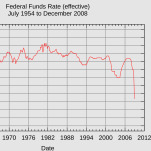Separating fact from fiction in the bogus argument that immigrants commit more violent crimes
Donald Trump famously launched his campaign by asserting that Mexican immigrants were criminals. Now that he’s president, he’s looking to prove it.
In his first week in office, amid a flurry of executive orders targeting immigrants and asylum-seekers, he directed the Justice Department and the Department of Homeland Security (DHS) to start collecting and analyzing data on crimes committed by immigrants, as well as on the legal status of immigrants incarcerated in state and federal prisons.
The administration also pledged to publish a weekly list of crimes committed by immigrants in order to shame sanctuary cities and counties that have a policy of refusing to turn over undocumented immigrants to federal authorities.
Trump continues to repeat his claim that immigrants are a threat to American safety. He has frequently asserted, without providing evidence, that there are 2 million undocumented immigrants with criminal records in the country. Trump is not the first to make immigrants a political target. For more than a century, American nativists have argued that immigrants cause crime rates to skyrocket. The sentiment has taken deep root in the right wing: One of Trump’s biggest backers, the National Rifle Association — which spent $30 million in support of his candidacy, more than any other outside group — has used its high profile and deep pockets to stoke the populist rage that propelled Trump’s victory and which often relies on virulently anti-immigrant rhetoric.
“Latin American drug gangs have invaded every city of significant size in the United States,” NRA head Wayne LaPierre said in 2013. “Though the states on the U.S.–Mexico border may be the first places in the nation to suffer from cartel violence, by no means are they the last.”
But no data has ever supported Trump’s persistent claims that immigrants are responsible for an outsized share of crime. The research that has focused on immigrants and crime has actually concluded that immigrants are less likely to engage in criminal activity — and their presence may even make communities safer. Studies show that immigration has no effect on crime rates and that immigrants are less likely to commit crimes, or be incarcerated, than the general population. In fact, violent crime actually declines in areas where foreign-born communities have grown.
Sociologists say immigrant communities tend to be more socially cohesive than ones where native–born Americans predominate. Economists have suggested that the type of person who chooses to migrate tends to be less prone to criminal activity and more deterred by tough penalties than native-born citizens. The available data does not clearly differentiate between documented and undocumented immigrants, but researchers have posited that undocumented immigrants have the strongest incentives to avoid activity that would put them in contact with the criminal justice system.
Native-born Americans may be more likely to have a bad influence on immigrants than the other way around, according to a Pew Research Center analysis. First-generation immigrants are much less likely to commit a crime than Americans who have been in the country for three generations. But the crime rates of the American-born children of immigrants creep closer up to native-born whites, which one sociologist has argued is because those children assimilate into the culture. Another study found that immigrants’ incarceration rates went up the longer they had been in the United States.
Sanctuary cities and counties — frequent targets of Trump’s ire — have lower crime rates than other comparable areas. Law enforcement officials suggest that that might be because immigrants in sanctuary cities are less likely to view local police as a deportation force, and are more willing to cooperate with criminal investigations.
-

-

-

-

-

-

-

-

-

-

-

-

-

-

-

-

-

-

-

-

-

-

-

-

-

-

-

-

-

-

-

-

-

-

-

-

-

-

-

-

-

-

-

-

-

-

-

-

-

-

-

-

-

-

-

-

-

-

-

-

-

-

-

-

-

-

-

-

-

-

-

-

-

-

-

-

-

-

-

-

-

-

-

-

-

-

-

-

-

-

-

-

-

-

-

-

-

-

-

-

-

-

-

-

-

-

-

-












































































































